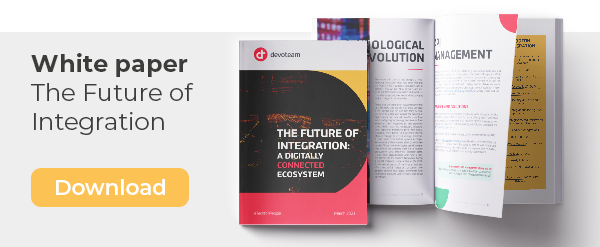1. What is Anypoint Runtime Fabric?
Runtime Fabric orchestrates and automates the deployment of Mule runtimes into containers in any cloud or on-premises.
Benefits
- Deploy consistently across any cloud (Azure & AWS) or data center
- No resources required to support or maintain orchestration & automation
- Run multiple runtime versions in the same Runtime Fabric
- Isolate apps, scale horizontally, redeploy w/ zero-downtime
- Easily connect to the control plane hosted by MuleSoft
2. Where can you install RTF?
Runtime Fabric on Self-Managed Kubernetes: a version of Runtime Fabric that you install on an existing Kubernetes environment that you operate and manage. This version supports Amazon Elastic Kubernetes Service (Amazon EKS), Azure Kubernetes Service (AKS), and Google Kubernetes Engine (GKE).
Runtime Fabric on VMs / Bare Metal: a version of Runtime Fabric where MuleSoft provides required software infrastructure components, including Docker and Kubernetes. You install this version on virtual machines that you operate and manage.
3. Roles and Responsibilities
| Task/Role | Inhouse IT Administrator | MuleSoft Administrators | 3rd Party Vendor(in Case of Public Cloud) |
| Create or Configure AKS, EKS, GKS, or Infrastructure to run RTF? | V | ||
| Installation of RTF | V | ||
| Maintenance of Kubernetes Cluster | V | ||
| Maintenance of RTF Service | V | ||
| Creates Runtime Fabric instances | V | ||
| performs other tasks within Anypoint Platform | V | ||
| Making Updates available | V | V | |
| Updating the Mule App | V | ||
| JVM | V | ||
| Agent | V | ||
| API Monitoring/Report | V | ||
| SLA and Client Management | V | ||
| API | V | ||
| Runtime | V (In case of VMs/Bare Metal Installation) | V | |
| JVM | V (In case of VMs/Bare Metal Installation) | V | |
| Container | V (In case of VMs/Bare Metal Installation) | V | |
| OS | V (In case of VMs/Bare Metal Installation) | V |
4. What are the number of servers required for Runtime Fabric?
For Development Configuration, there should be minimum 3 servers
1 Controller VM/Server and 2 for Workers.
For Production, there should be a minimum of 6 servers.
3 Controllers VM/Server and 3 workers.
5. What are the Maximum number of nodes allowed?
The maximum number of supported controller nodes is 5.
The maximum number of worker nodes supported is 16.
6. Who takes care of Patch Management?
MuleSoft. But, Once Patches are available, It is the responsibility of the customer to apply the patch to the Implementation layer.
7. Is Replica the same as the Worker on CloudHub?
Yes.
8. Is it possible to provision the non-mule docker image in Runtime Fabric?
No. Because RTF is built to support the capabilities of the Anypoint platform today and any new in the future and to support that from MuleSoft.
9. Does RTF come with Pre Build load balancer capability?
Not always. In the case of RTF Installation on Self-Managed Kubernetes, customers can use Ingress Controller as LB. But, In the case of RTF Installation on VM/Bare metal LB is included.
10. Can we use the same CloudHub Load Balancer in case of Migration to RTF
No. CloudHub LB can only point to Mule Works inside the CloudHub.
11. Can we install RTF on any Linux distribution?
Runtime Fabric on Self-Managed Kubernetes
- Can be installed on any Linux distribution.
Runtime Fabric on VMs / Bare Metal
- RedHat (RHEL): v7.4, v7.5, v7.6, v7.7, v7.8, v7.9, v8.0, v8.1, v8.2
- CentOS: v7.4, v7.5, v7.6, v7.7, v7.8, v7.9, v8.0, v8.1, v8.2
12. Can you run CloudHub and RTF together?
Yes. Control Plan Can be CloudHub and Runtime in AKS, EKS, GKS, or VM/Bare Metal Server.
13. Is pods Auto Scaling available in RTF?
Yes, It can be made available provided we have enough resources.
14. Can we change the Logging level of the application deployed in Runtime Fabric from CloudHub?
Yes. But the difference is, when changing the logging level for RTF deployed apps you need to change the Properties tab in the below format and not in the Logging tab as like CloudHub apps.
Syntax: logging.level.<PACKAGE>=LEVEL

